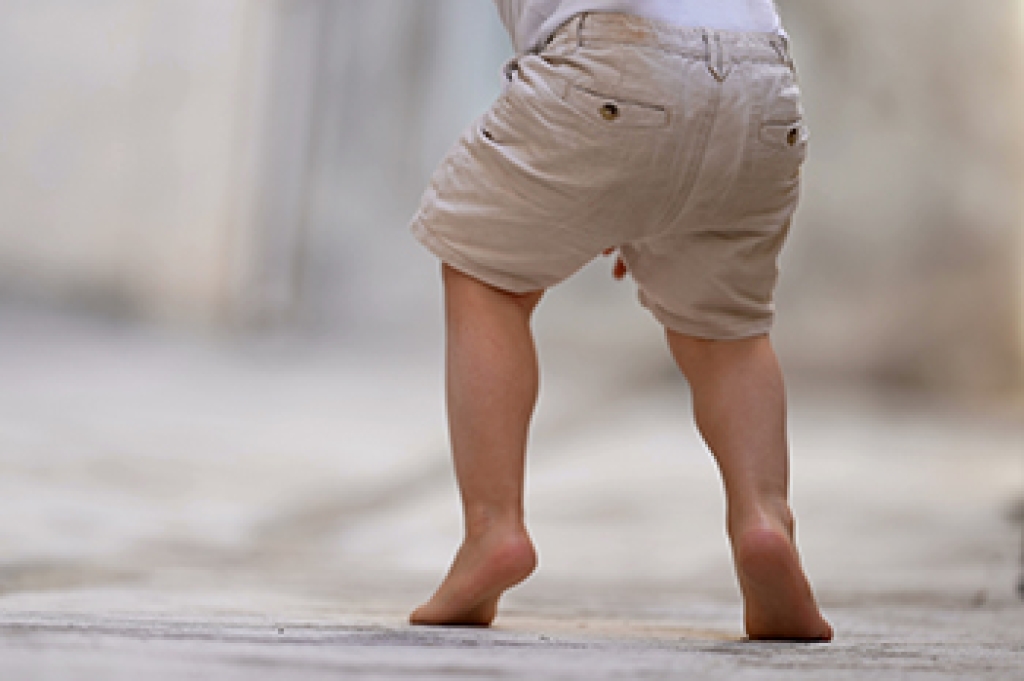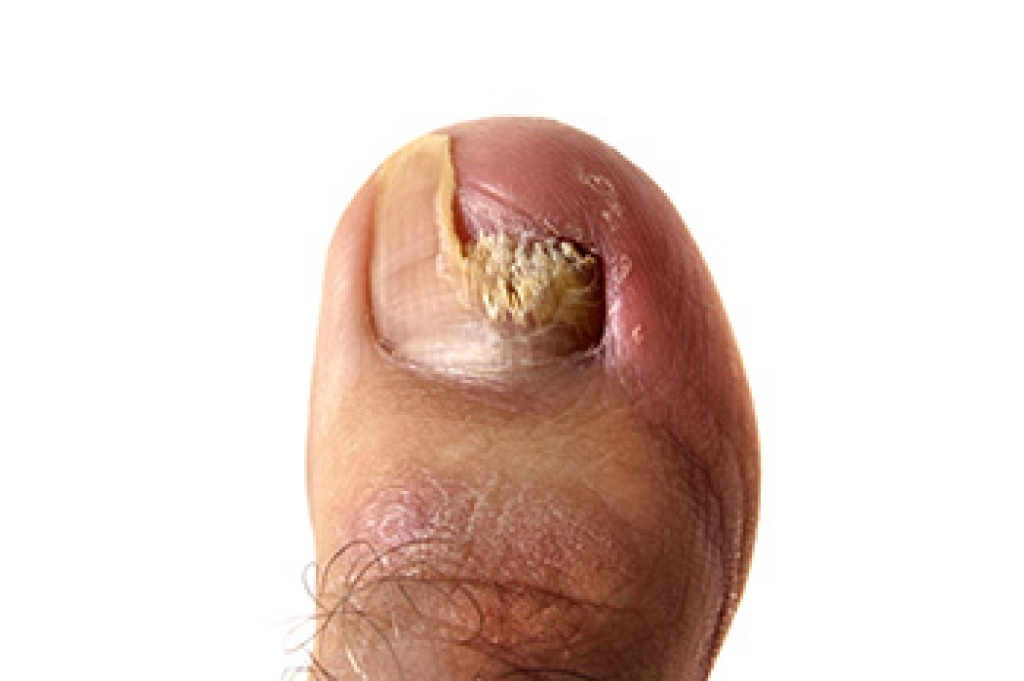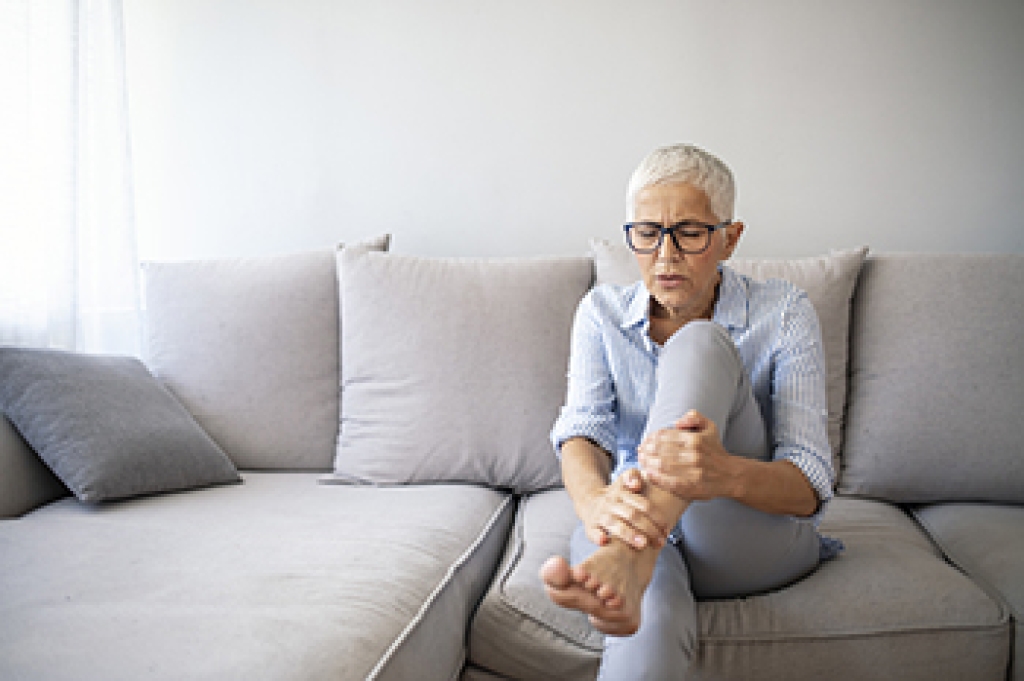Connect With Us
Blog
Blog
Is Toe-Walking in Children Concerning?

Toe-walking occurs when a child walks on their toes without letting their heels touch the ground. While many children learn a normal heel-to-toe walking pattern as they grow, persistent toe-walking beyond five years old, called idiopathic toe walking, can negatively affect the feet and ankles. Toe-walking can lead to tightness in the calf muscles and limited ankle movement, making it difficult for the heels to contact the floor. Over time, this can place stress on the Achilles tendon and alter normal gait mechanics. A podiatrist can assess whether the cause is related to shortened tendons, muscle imbalance, or another structural issue. Treatment may involve a stretching program and supportive custom orthotics to improve flexibility and promote proper walking patterns. Early evaluation helps prevent stiffness, balance issues, and discomfort in your child’s lower legs. If you notice persistent toe-walking in your child, it is suggested that you schedule an appointment with a podiatrist for an exam and appropriate treatment options.
The health of a child’s feet is vital to their overall well-being. If you have any questions regarding foot health, contact Afsha Naimat-Shahzad, DPM of Leander Foot & Ankle. Our doctor can provide the care you need to keep you pain-free and on your feet.
Tips for Keeping Children's Feet Healthy
- Make sure their shoes fit properly
- Look for any signs of in-toeing or out-toeing
- Check to see if they have Clubfoot (condition that affects your child’s foot and ankle, twisting the heel and toes inward) which is one of the most common nonmajor birth defects.
- Lightly cover your baby’s feet (Tight covers may keep your baby from moving their feet freely, and could prevent normal development)
- Allow your toddler to go shoeless (Shoes can be restricting for a young child’s foot)
- Cut toenails straight across to avoid ingrown toenails
- Keep your child’s foot clean and dry
- Cover cuts and scrapes. Wash any scratches with soap and water and cover them with a bandage until they’ve healed.
If you have any questions, please feel free to contact our office located in Leander, TX . We offer the newest diagnostic and treatment technologies for all your foot care needs.
Crumbling Toenails Can Signal a Fungal Infection

A toenail that begins to change in color, thickness, or texture may be a sign of infection. What often starts at the edge of the nail can spread across the surface, leading to yellow or white discoloration, brittle texture, and even complete crumbling of the nail plate. In more advanced cases, the nail may detach from the nail bed, which can cause swelling, discomfort, and sensitivity surrounding the toe. These changes occur more commonly in the feet because toes are often confined in warm, damp environments inside shoes, especially when worn for long periods of time. Walking barefoot in public places, like locker rooms, or wearing flip-flops in moist conditions can also increase risk. A podiatrist can carefully examine the affected nail, and identify the cause. Treatment of fungal toenails include trimming away damaged nail tissue, or, if necessary, performing outpatient surgery to remove the infected portion. If you notice changes to your toenails, it is suggested that you schedule an appointment with a podiatrist for an exam and appropriate treatment.
If left untreated, toenail fungus may spread to other toenails, skin, or even fingernails. If you suspect you have toenail fungus it is important to seek treatment right away. For more information about treatment, contact Afsha Naimat-Shahzad, DPM of Leander Foot & Ankle. Our doctor can provide the care you need to keep you pain-free and on your feet.
Symptoms
- Warped or oddly shaped nails
- Yellowish nails
- Loose/separated nail
- Buildup of bits and pieces of nail fragments under the nail
- Brittle, broken, thickened nail
Treatment
If self-care strategies and over-the-counter medications does not help your fungus, your podiatrist may give you a prescription drug instead. Even if you find relief from your toenail fungus symptoms, you may experience a repeat infection in the future.
Prevention
In order to prevent getting toenail fungus in the future, you should always make sure to wash your feet with soap and water. After washing, it is important to dry your feet thoroughly especially in between the toes. When trimming your toenails, be sure to trim straight across instead of in a rounded shape. It is crucial not to cover up discolored nails with nail polish because that will prevent your nail from being able to “breathe”.
In some cases, surgical procedure may be needed to remove the toenail fungus. Consult with your podiatrist about the best treatment options for your case of toenail fungus.
If you have any questions please contact our office located in Leander, TX . We offer the newest diagnostic and treatment technologies for all your foot and ankle needs.
When Arthritis Affects Your Feet

Arthritis in the feet can make each step feel heavier and more painful than the last. It often begins with stiffness in the morning or after sitting, followed by aching or swelling surrounding the joints of the toes, midfoot, or ankle. The pain may feel sharp during movement or dull and throbbing by the end of the day. As the condition progresses, joints can lose flexibility, making it harder to walk, climb stairs, or fit into regular shoes. Some people notice warmth, redness, or bony bumps forming around the affected areas. Because arthritis can worsen over time, early diagnosis is important. A podiatrist can assess joint health, recommend supportive footwear, custom orthotics, or anti-inflammatory treatments, and suggest gentle exercises to maintain mobility. If you have joint pain in your feet or ankles, it is suggested that you consult a podiatrist for relief options.
Arthritis can be a difficult condition to live with. If you are seeking treatment, contact Afsha Naimat-Shahzad, DPM from Leander Foot & Ankle. Our doctor can provide the care you need to keep you pain-free and on your feet.
Arthritic Foot Care
Arthritis is a joint disorder that involves the inflammation of different joints in your body, such as those in your feet. Arthritis is often caused by a degenerative joint disease and causes mild to severe pain in all affected areas. In addition to this, swelling and stiffness in the affected joints can also be a common symptom of arthritis.
In many cases, wearing ill-fitting shoes can worsen the effects and pain of arthritis. Wearing shoes that have a lower heel and extra room can help your feet feel more comfortable. In cases of rheumatoid arthritis, the arch in your foot may become problematic. Buying shoes with proper arch support that contour to your feet can help immensely.
Alleviating Arthritic Pain
- Exercises that stretch the foot can prevent further pain and injury and increase mobility
- Most of the pain can be alleviated with anti-inflammatory drugs, heat, and topical medications
- Massages can help temporarily alleviate pain.
It is best to see your doctor for the treatment that is right for your needs and symptoms. Conditions vary, and a podiatrist can help you determine the right method of care for your feet.
If you have any questions please feel free to contact our office located in Leander, TX . We offer the newest diagnostic tools and technology to treat your foot and ankle needs.
What Top of Foot Pain Could Mean for Your Health

Pain on the top of the foot can be caused by injuries, stress fractures, or tendonitis, each bringing its own set of symptoms and concerns. Injuries like sprains or impacts can cause immediate swelling, bruising, and sharp pain. Stress fractures, often due to overuse or repetitive activity, may cause a dull ache that worsens with walking or running. Tendonitis, particularly affecting the extensor tendons, those from the front of the leg to the toes, can lead to tenderness, inflammation, and discomfort when flexing the foot. The pain may feel sharp, throbbing, or achy and may make wearing shoes or bearing weight difficult. A podiatrist can accurately diagnose the cause through a detailed exam, imaging studies, such as X-rays or an MRI, and an assessment of activity levels and footwear. Treatment may involve rest, bracing, orthotics, or medication. In more severe cases, immobilization or surgical options may be considered. To avoid complications and restore comfort, it is suggested that you make an appointment with a podiatrist.
Foot Pain
Foot pain can be extremely painful and debilitating. If you have a foot pain, consult with Afsha Naimat-Shahzad, DPM from Leander Foot & Ankle. Our doctor will assess your condition and provide you with quality foot and ankle treatment.
Causes
Foot pain is a very broad condition that could be caused by one or more ailments. The most common include:
- Bunions
- Hammertoes
- Plantar Fasciitis
- Bone Spurs
- Corns
- Tarsal Tunnel Syndrome
- Ingrown Toenails
- Arthritis (such as Gout, Rheumatoid, and Osteoarthritis)
- Flat Feet
- Injury (from stress fractures, broken toe, foot, ankle, Achilles tendon ruptures, and sprains)
- And more
Diagnosis
To figure out the cause of foot pain, podiatrists utilize several different methods. This can range from simple visual inspections and sensation tests to X-rays and MRI scans. Prior medical history, family medical history, and any recent physical traumatic events will all be taken into consideration for a proper diagnosis.
Treatment
Treatment depends upon the cause of the foot pain. Whether it is resting, staying off the foot, or having surgery; podiatrists have a number of treatment options available for foot pain.
If you have any questions, please feel free to contact our office located in Leander, TX . We offer the newest diagnostic and treatment technologies for all your foot care needs.
Blog Archives
- 2025
- 2024
- 2023
- 2022


